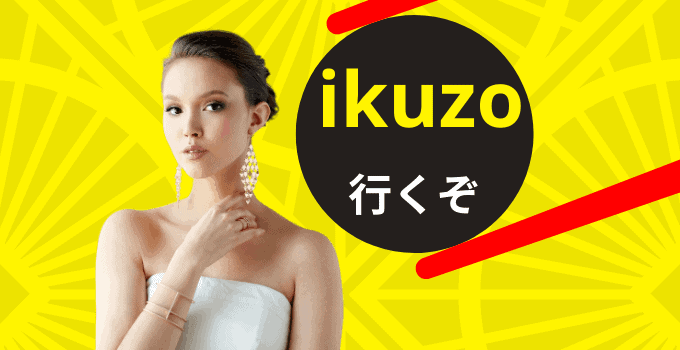Watching anime or other Japanese TV can be a great way to practice your listening skills.
The only possible downside is that sometimes characters will speak in a very casual way or use slang you’re not familiar with.
Although this seems like a bad thing, all you need is a little research before you can level up even further.
If you’ve ever watched anime like Dragon Ball Z, Jojo’s Bizarre Adventure or anything else with brash, kind of macho male characters chances are good you’ve heard someone shout 「行くぞ!」 (いくぞ/ikuzo) at some point.
Subtitles might translate this as “Let’s go!” and while that’s good enough it’s not entirely accurate and can mislead you about the grammar and words involved in this simple sentence.
So what does “ikuzo” mean?
The meaning of ikuzo (行くぞ) in Japanese
行くぞ is the verb 行く (to go) followed by a specific type of particle called a “sentence-ending particle” (終助). In this case, the particle in question is ぞ. When stuck at the end of a sentence, ぞ is used to emphasize something the speaker is saying. Typically, ぞ is only used by men and gives an utterance a brash, impudent tone. Taken literally,「行くぞ」means that the speaker is going somewhere and wants to emphasize it. In practice, it is used to mean that the speaker is about to do something, similar to “Here I go” in English.
Breaking down “ikuzo”: 行く and ぞ
「行くぞ」 is actually a complete sentence, albeit a simple one.
The first part of the sentence is the verb 行く (いく), meaning “to go.” If you’re new to Japanese, you might have only learned verbs with “ます” on the end.
行く is the conjugative suffix of 行きます and is sometimes called the “dictionary form” of the verb.
After the verb comes ぞ. This particle, when attached to the end of a sentence, is used to show emphasis like the more common よ.
Unlike that other particle, though, ぞ carries with it a sense that the speaker is full of himself and about to show off or is really giving his all.
Because ぞ is typically only used by males, ぞ also means that the speaker is probably manly or trying to act manly–although that doesn’t always have to be the case.
The eagle-eyed reader may notice that this sentence appears to be missing a subject. As is typical with spoken Japanese, the subject is implied and must be determined from context.
While this means an accurate translation could be anything from “The train is going” (列車は行くぞ!) to “The man-eating alligator is going” (人食い輪には行くぞ!), unless some context implies one of those it’s more likely that some version of the word “I” is the subject.
In other words, the full version of this sentence is probably 「俺は行くぞ!」
Going, go or will go?
Japanese lacks a future tense and a present perfect tense, so here too context is key.
In a conversation about something happening far away or in a month’s time, “will go” is obviously a more accurate translation then “am going.” Conversely, if a situation is escalating, anyone shouting 「行くぞ!」 is probably getting ready to stage an intervention right then and there.
ぞ: all the details
ぞ is a sentence-ending particle used for emphasis. Although it’s technically gender-neutral, a quick Google search will reveal that in the world of anime and manga it’s most often used by musclebound men heading into a fight (shirts optional).
The Japanese dictionary definition of ぞ in this case is that it’s used to “show the speaker’s determination” or to “strongly put forward one’s own opinion.”
Why is “let’s go” a common translation of “ikuzo”?
If 行くぞ is actually referring to what the speaker is about to do, why is this sentence so often translated as “Let’s go” if “I’m going” is technically more correct?
The answer is that a good translation provides not just accuracy of meaning but a degree of localization.
Thinking about it another way, if you were worked up and getting ready to throw yourself into battle, would you should “I go!”? Probably not.
“Let’s go!” is less technically accurate, but it’s a lot more like something a native English speaker would say.
Other ways to say 行くぞ
Sentence-ending particles are a great way to add nuance to what you’re saying.
Check out these other options for 行くぞ:
「行く!」
Still “I’m going,” but less brash and macho.
「行きますよ!」
This version uses the ます conjugation of 行く and suggests a neutral tone. It can also be used in an intimidating way, however.
「行くわ!」
わ shows emphasis but is typically used only by women.
「行くかも。」
This person is obviously not excited. かも is shorthand for かもしれない or “I guess.”

Hey fellow Linguaholics! It’s me, Marcel. I am the proud owner of linguaholic.com. Languages have always been my passion and I have studied Linguistics, Computational Linguistics and Sinology at the University of Zurich. It is my utmost pleasure to share with all of you guys what I know about languages and linguistics in general.

